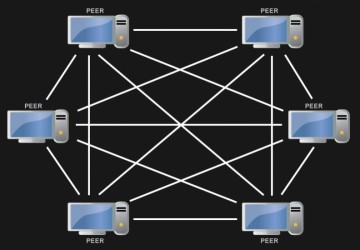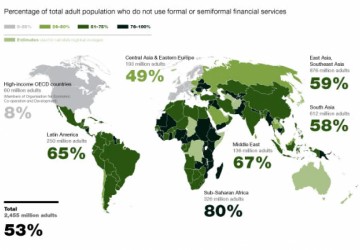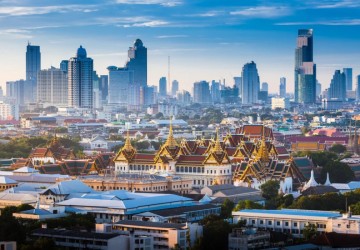
The Rise of the Digital Nomad
The Rise of the Digital Nomad: Work, Travel, and a Life of Freedom
By Confidia Newsroom – March 24, 2025
In a world where work is no longer confined to office cubicles and morning commutes, a new kind of professional has emerged — the digital nomad. They’re remote workers, freelancers, and entrepreneurs who travel the world while earning a living online. Their office? Anywhere with a Wi-Fi connection.
What Is a Digital Nomad?
A digital nomad is someone who leverages technology to work remotely while living a location-independent lifestyle. Rather than being tied to one city or country, they often move between places — from vibrant cities to tropical beaches — working from cafes, coworking spaces, or even hammocks by the ocean.
What Kind of Work Do Digital Nomads Do?
Digital nomads work across a wide variety of industries, thanks to the explosion of remote-first companies and online platforms. Common careers include:
-
Freelance and contract roles: Writers, designers, developers, marketers, translators, and video editors.
-
Tech and IT jobs: Software engineers, UX/UI designers, cybersecurity consultants.
-
E-commerce and dropshipping: Running online stores through platforms like Shopify or Amazon.
-
Online teaching or coaching: Language tutors, fitness coaches, business consultants.
-
Content creators and influencers: Bloggers, YouTubers, and podcasters.
-
Virtual assistants and remote support roles: Customer service, admin, or project management.
As long as the work can be done online, the possibilities are nearly endless.
What Kind of Lifestyle Do They Live?
Digital nomads prioritize freedom, flexibility, and experiences over traditional career paths. Their lifestyle is often characterized by:
-
Minimalism: Living with less, but gaining more in terms of experiences.
-
Flexibility: Setting their own hours and often choosing their own clients or projects.
-
Adventure: Exploring new cultures, learning new languages, and meeting like-minded travelers.
-
Balance: Blending productivity with personal well-being — whether it's through yoga on a beach or hiking in the mountains.
Many choose to live in locations with a lower cost of living and a high quality of life, allowing them to save more or work fewer hours.
Why Is It Becoming So Popular?
Several factors have accelerated the digital nomad trend:
-
Remote work normalization after the COVID-19 pandemic.
-
Affordable travel and increased connectivity around the globe.
-
A cultural shift towards experiential living over materialism.
-
Rising costs in developed countries, encouraging workers to relocate to more budget-friendly destinations.
-
Governments offering digital nomad visas to attract foreign income earners.
As younger generations prioritize freedom and experiences, the digital nomad lifestyle has gone from niche to mainstream.
Favorite Destinations in Asia
Asia is a hotspot for digital nomads, especially due to its affordability, warm climate, and rich cultural experiences. Some of the most popular countries include:
-
Thailand: Bangkok, Chiang Mai, and Phuket offer a perfect mix of modern amenities, low costs, and tropical living.
-
Indonesia: Bali is a global digital nomad hub, known for coworking spaces and beachside cafés.
-
Vietnam: Cities like Da Nang and Ho Chi Minh City provide fast internet, affordable living, and vibrant local life.
-
Malaysia: Kuala Lumpur and Penang are growing in popularity due to great infrastructure and multicultural vibes.
-
Philippines: With English widely spoken and beautiful islands, it's an emerging favorite for digital nomads.
How the Cost of Living Can Be Greatly Reduced
Living in Southeast Asia can reduce your monthly expenses by 50–70% compared to countries like Australia, the US, or the UK. For example:
-
Rent: A modern apartment in Chiang Mai costs around $400 AUD/month, compared to $3,000+ in Sydney.
-
Meals: Local food can cost as little as $2–3 AUD.
-
Transportation: Ride-sharing apps, scooters, and public transport are cheap and convenient.
-
Healthcare: High-quality, affordable healthcare is available across Asia, often at a fraction of Western prices.
This cost-saving allows digital nomads to either work less and live more, or save and invest faster.
Advice for Aspiring Digital Nomads
Thinking of joining the movement? Here are some tips:
-
Start with a remote job or freelance gig in your current skillset.
-
Build a savings buffer before traveling — 3 to 6 months of expenses is ideal.
-
Pick affordable countries first, like Thailand, Vietnam, or Indonesia.
-
Stay productive by setting routines and using coworking spaces.
-
Join nomad communities online (Facebook groups, Reddit, Discord) or in-person to build support and connections.
-
Travel slow — spending 1–3 months in each place helps you save money, reduce burnout, and form deeper connections.
Final Thoughts
The digital nomad lifestyle isn't just about working from exotic locations — it’s about designing a life that prioritizes freedom, flexibility, and fulfillment. With the right skills, mindset, and a strong internet connection, anyone can live and work from anywhere in the world.
And for many, the journey begins in Asia — where opportunity meets adventure.
-
 11/30/2025 217
11/30/2025 217 -
 11/30/2025 91
11/30/2025 91 -
 10/11/2025 482
10/11/2025 482 -
 08/27/2025 569
08/27/2025 569 -
 08/27/2025 530
08/27/2025 530 -
 08/18/2025 521
08/18/2025 521 -
 05/30/2025 1074
05/30/2025 1074 -
 03/24/2025 942
03/24/2025 942 -
 03/24/2025 924
03/24/2025 924 -
 03/23/2025 906
03/23/2025 906
-
 06/11/2017 7679
06/11/2017 7679 -
 06/20/2017 5859
06/20/2017 5859 -
 06/29/2017 5159
06/29/2017 5159 -
 07/13/2020 4320
07/13/2020 4320 -
 07/17/2020 3873
07/17/2020 3873 -
 05/02/2021 3297
05/02/2021 3297 -
 01/07/2024 2451
01/07/2024 2451 -
 11/28/2023 2405
11/28/2023 2405 -
 06/17/2024 2135
06/17/2024 2135 -
 07/04/2024 2111
07/04/2024 2111
FEATURED NEWS

FINTECH

GENERAL

THAILAND

BLOG



LEAVE A COMMENT